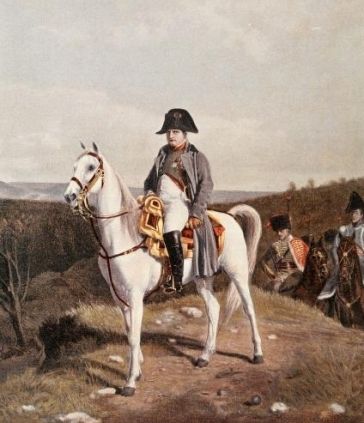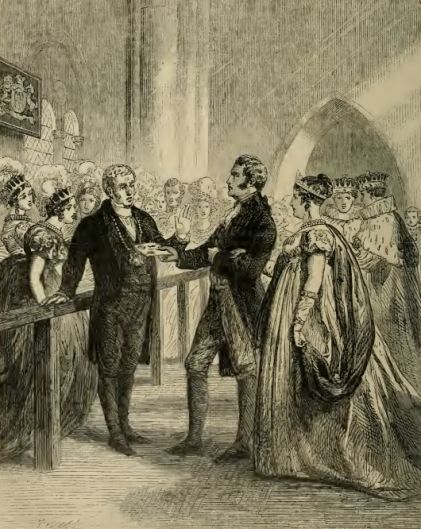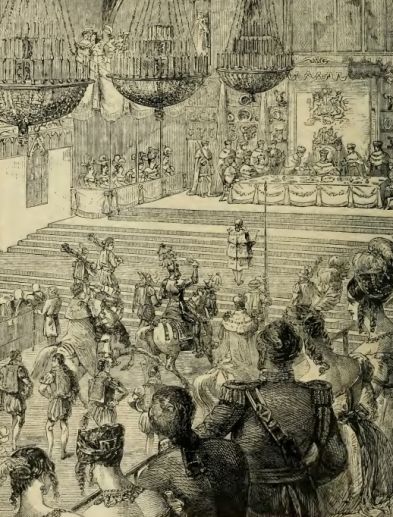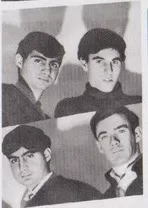nn
n
n
n
 |
| George IV |
n
nHenrailed against the members of both Houses; when Prince Leopold, his son-in-law,nvisited the Queen, the King cut him off and refused to speak to him thereafter.nLater, in May 1821, it was announced to him that, “His Majesty’s greatestnenemy is dead.” He replied with thenwords, “Thank God she is dead.” He thought, wrongly, that Caroline hadndied; the ‘greatest enemy’ was, in reality, Napoleon Bonaparte.
n
n
 |
| Would the Real Greatest Enemy Please Stand Up? |
n
n
n
n
n“We have noninstructions to allow you to pass.”
n
n
n
 |
| Queen Charlotte refused entry to Westminster Abbey |
n
nLord Hood pointed out that she was thenQueen of England, but was told that anyone without a Peer’s ticket would not benadmitted. Hood produced a ticket, signed ‘Wellington’, which he handed tonCaroline, only to be told that it would only admit one person. Caroline refusednto enter without Lady Wood and Lady Hamilton, and they all went to the door ofnthe other cloister where, again, she was turned away. She attempted to enternthrough Westminster Hall, where she was faced by armed men with bayonets, whichnwere held under her chin, until the door was slammed shut against her. Finally,nshe tried to get into the Abbey by a side door near Poets’ Corner, and oncenagain she was turned away. At the advice of Sir Robert Inglis, she returned tonher carriage and was driven back to Brandenburg House. The whole sorrynrigmarole was watched by an embarrassed, silent crowd, as the visibly shakennQueen, almost reduced to tears, was thwarted by her vengeful King.
n
n
 |
| The Coronation of George IV |
n
nThat night,nbefore retiring, she took a glass of water, to which she added so much magnesianthat it almost formed a paste, together with a few drops of laudanum. LadynHamilton begged her not to drink this, but she insisted, claiming that it wasnthe only way that she would be able to sleep, and it was only with the help ofna spoon that she managed to take the concoction. The following day, she was illnand when, over a week later, she went to the theatre in Drury Lane, she faintednduring the performance and had to be brought back to Brandenburg House. Overnthe next week, her condition deteriorated until, at twenty-five minutes past tennon the evening of August 7th 1821, she died from ‘internalninflammation.’ The general consensus was that her treatment at the Abbeynhad been the straw that finally broke her spirit. She had expressed the wishnthat, following her death, her body be taken back to Brunswick and should benburied in a tomb bearing the words,
n
n
n“Here lies Caroline of Brunswick, theninjured Queen of England.”
n
n
n
 |
| Banquet following the Coronation of George IV |
n
nThe Government, anxious not to upset the King,nplanned for the route of the coffin to circumvent the City of London on its journeynto Harwich, but they had reckoned without the English mob. All that remained innthe public’s heart was a blistering indignity at the insults heaped uponnCaroline in life by her hated, bloated buffoon of a husband, and when thencortège reached Kensington church, wagons had been placed across the plannednroute and their wheels removed. Trenches were dug in the roads, water pipesnwere opened and the authorities had no other option but to pass to the southnside of Hyde Park. To cries of ‘Shame’ and ‘Through the City’, the mob forcednthe procession away from the Park and toward Cumberland Gate.
n
n
 |
| Catalogue of the Sale of Queen Caroline’s Furniture and Effects |
n
nA troop of LifenGuards were called out, and the situation promised to descend into a riot whenntwo men were shot, but every street and side-street were deliberately blockednwith carts and coaches, giving the cavalcade no other option but to pass alongnthe City Road, along the Strand and through the City. On August 16th,nthe casket was loaded on board the frigate Glasgow and shipped to Stade,nfrom whence it passed to Brunswick, where Caroline’s remains were interred innthe cathedral vault of the House of Brunswick on August 26th, atnmidnight (as was the custom). R.I.P.
n
n





















